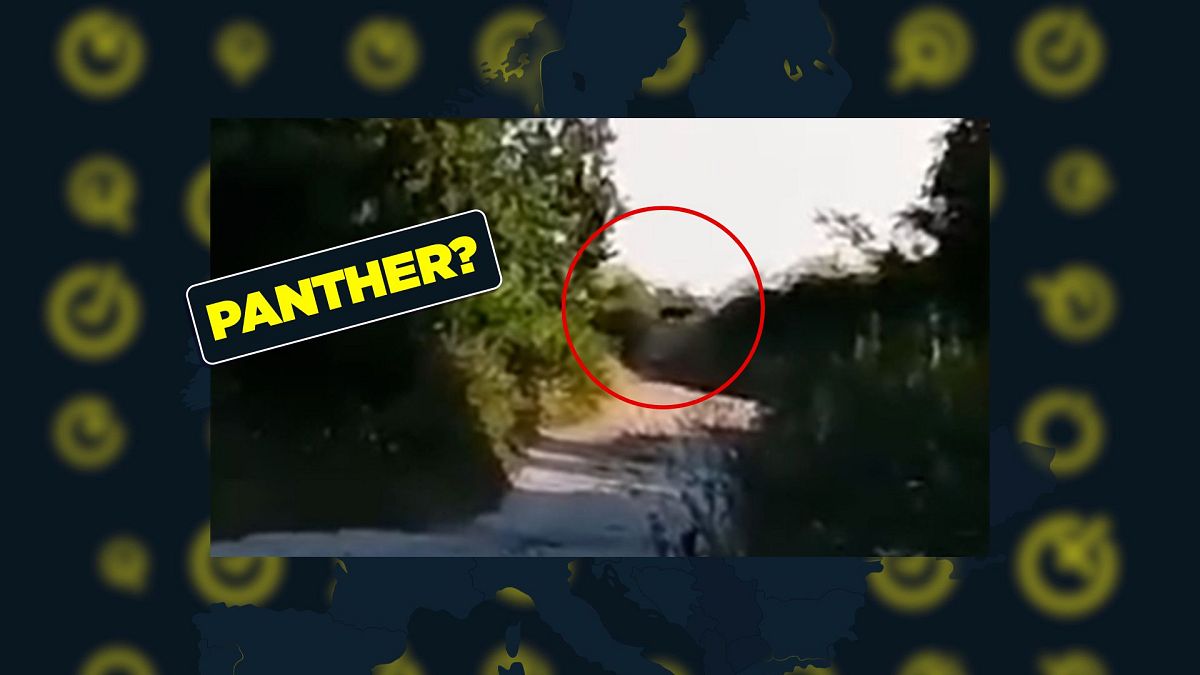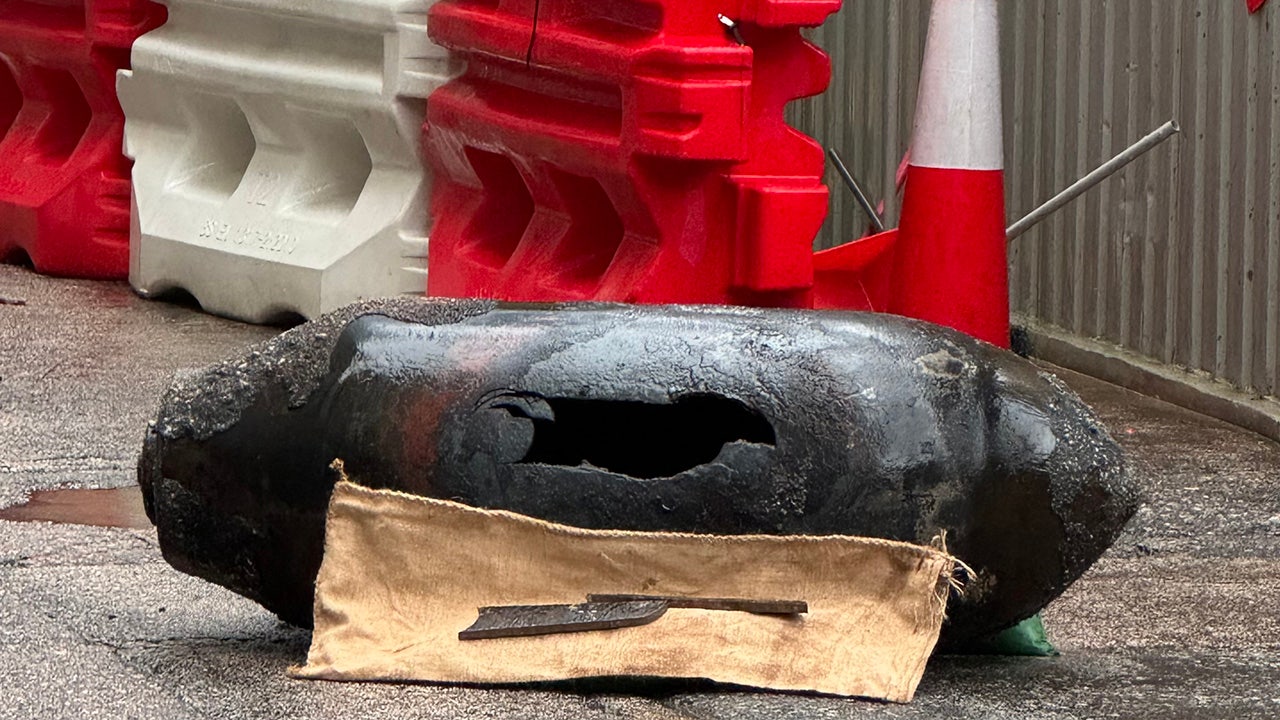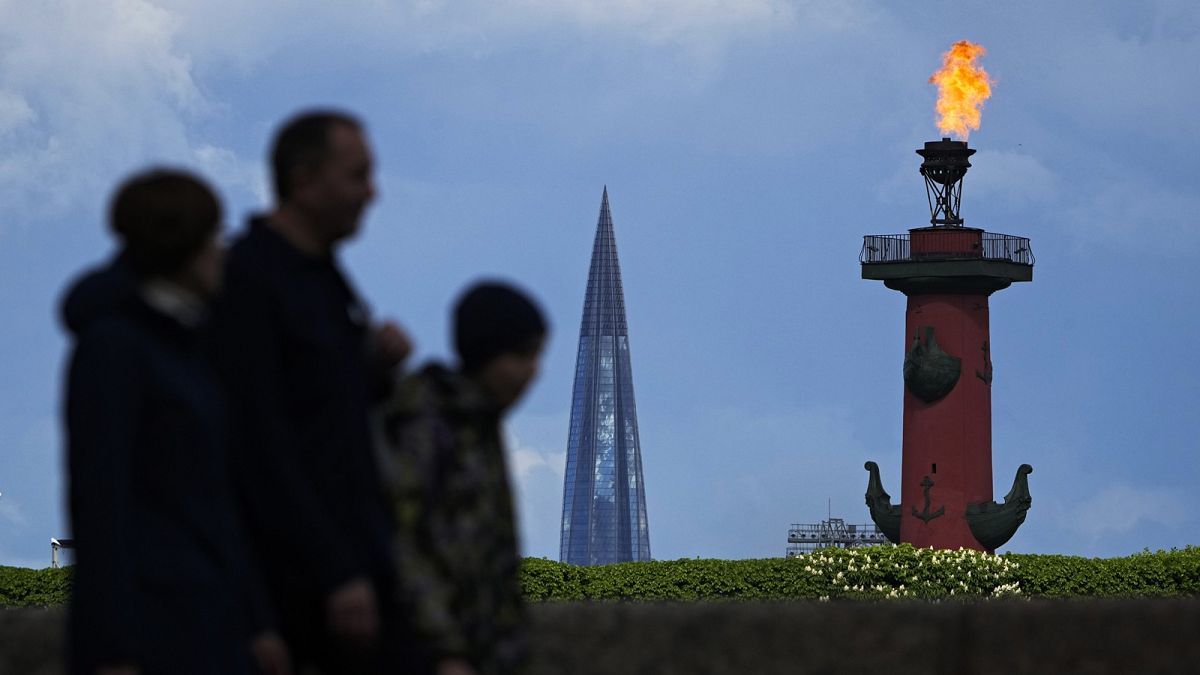Published on
Bulgaria has been on high alert in recent days following the alleged sighting of a large black cat or “panther” in the eastern city of Shumen.
Authorities began searching for the animal after a video appeared on social media showing a black silhouette with a tail roaming a park near the Monument to the Founders of the Bulgarian State.
Paw prints and the remains of prey were also reportedly spotted near the monument. Such big cats generally feed off animals like rodents and deer and while there have been reported wild black cat attacks on humans in Europe before, they are unverified.
Regardless, the situation in Bulgaria has prompted a stream of images, memes and dubious claims online worthy of debunking.
To begin with, yes, Bulgarian authorities really do suspect that a large, black cat is on the loose.
According to Euronews’ Bulgarian service, regional police in Shumen have warned against visiting the park where the animal was reportedly seen.
The head of Bulgaria’s Central Balkan National Park also said it has enlisted the help of the hunting sector and experts from South Africa as authorities continue their search.
The investigation has sparked a number of uncaptioned photos of the alleged panther to be posted online in relation to the story, but most of these are just generic stock images of a large black cat used for illustrative purposes in news reports.
Another video has since emerged, allegedly showing either the much younger animal wandering around the Bulgarian countryside two years ago, or another large black cat entirely.
However, EuroVerify spoke to big cat experts who said that it’s more likely a domestic cat in this video, because big cats typically have larger heads and longer tails.
“There are large cat breeds such as a Maine Coons which can reach 6-10kg and stand 40cm tall and reach almost a metre in length,” said Dr Tara Pirie, lecturer in ecology and conversation at the University of Surrey. “If it were a big cat, I would be looking for a long, sleek tail and relatively large head.”
“I would recommend to people, if they do find a big cat, to give it space, and do not approach it,” she added. “If they are able to go to where the animal was a while after it leaves and take a number of pictures of the tracks with something for a measurement reference in the picture, that could help with the ID.”
The animal has also sparked numerous AI-generated images to go viral on social media, depicting a black cat exploring Shumen, taking selfies and trying local food, but these are typically easy to identify.
When considering the search for the animal in general, experts said that it’s possible that it escaped from captivity, backing police suspicions that it ran away from an illegal, private zoo owned by organised crime figures.
The hypothesis lines up with similar cases in other European countries in recent years. Some wild big cat sightings in the likes of the UK and Spain ended up being likely exotic pet escapes, while occurrences in the Netherlands and Germany turned out to be other misidentified animals.
Four lynx were spotted in the Scottish Highlands in January, with authorities stating at the time that they believed they had been illegally released into the wild due to their tameness and straw bedding that had been left nearby.
Experts in Spain, meanwhile, said that a big cat supposedly spotted in Guadalajara in 2018 was likely from an illegal private collection.
In 2023, German officials called off their search for a suspected lioness on the loose in Berlin after concluding that the animal that had been seen was most likely a wild boar.
Read the full article here















